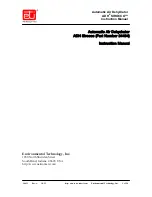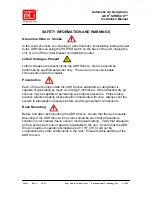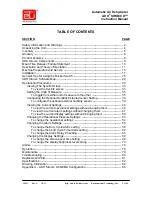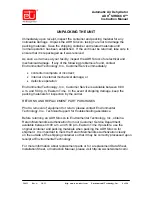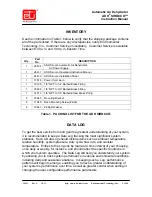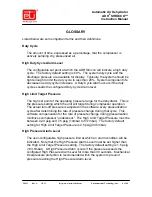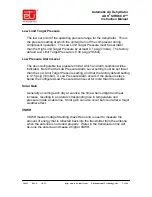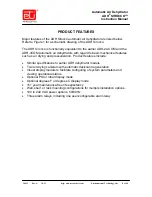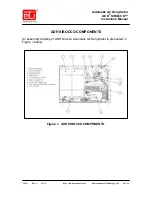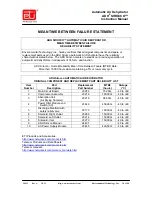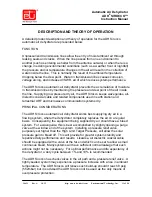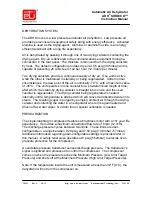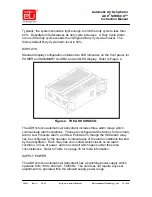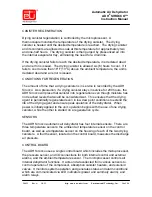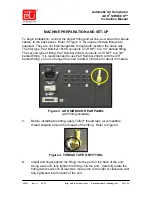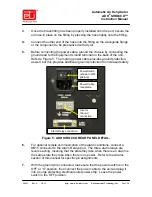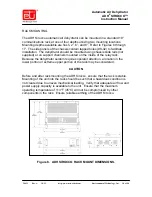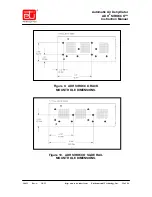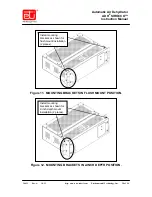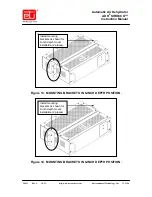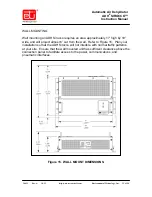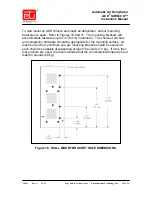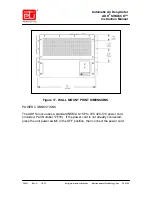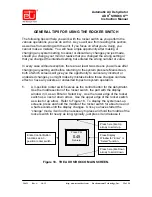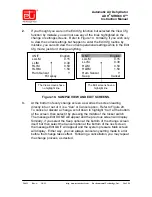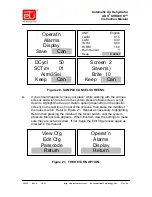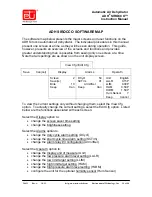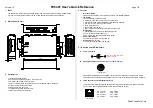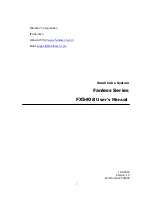
24431
Rev. A
10/12
http: www.networketi.com
Environmental Technology, Inc.
14 of 94
Automatic Air Dehydrator
ADH
®
SIROCCO™
Instruction Manual
CANISTER REGENERATION
Drying canister regeneration is controlled by the microprocessor. A
thermocouple monitors the temperature of the drying canister. The drying
canister is heated until the desired temperature is reached. The drying canister
and its contents are allowed to soak at this temperature for approximately two
and one-half hours. The drying canister is then purged by pressurized air into
the internal evaporator tray, eliminating the need for a drain line.
If the drying canister fails to reach the desired temperature, it is declared dead
and an error is issued. The drying canister is allowed six (6) hours to cool. If it
fails to cool to less than 18°F (10°C) above the ambient temperature, the unit is
declared dead and an error is issued.
CONDITIONS FOR REGENERATION
The amount of time that a drying canister is in service is recorded by the ADH
Sirocco. As a precaution, if a drying canister stays in service for 200 hours, the
ADH Sirocco will place that canister into regeneration even though moisture has
not reached levels that would be considered wet. This ensures that the drying
agent is periodically regenerated even in low dew point conditions to extend the
life of the drying agent and ensure peak operation of the dehydrator. When
power is initially applied to the unit, operation begins with the use of one drying
canister, while the other is started on a regeneration cycle.
SENSORS
The ADH Sirocco automatic air dehydrator has four internal sensors. There are
three temperature sensors: the ambient air temperature sensor on the control
board, as well as a temperature sensor on the housing of each of the two drying
canisters. A fourth sensor, located on the control board, measures the discharge
air pressure.
CONTROL BOARD
The ADH Sirocco uses a single control board which includes the microprocessor,
the pressure sensor, and I/O connections for both internal control and external
alarms, and the ambient temperature sensor. The microprocessor controls all
internal dehydrator functions. It acts on data collected from various sensors to
control operation of the compressor, absorption canister heaters, and solenoid
valves. It monitors system operation and generates status and alarm conditions
which are communicated via LED indicators (power and summary alarm), and
alarm relays.

